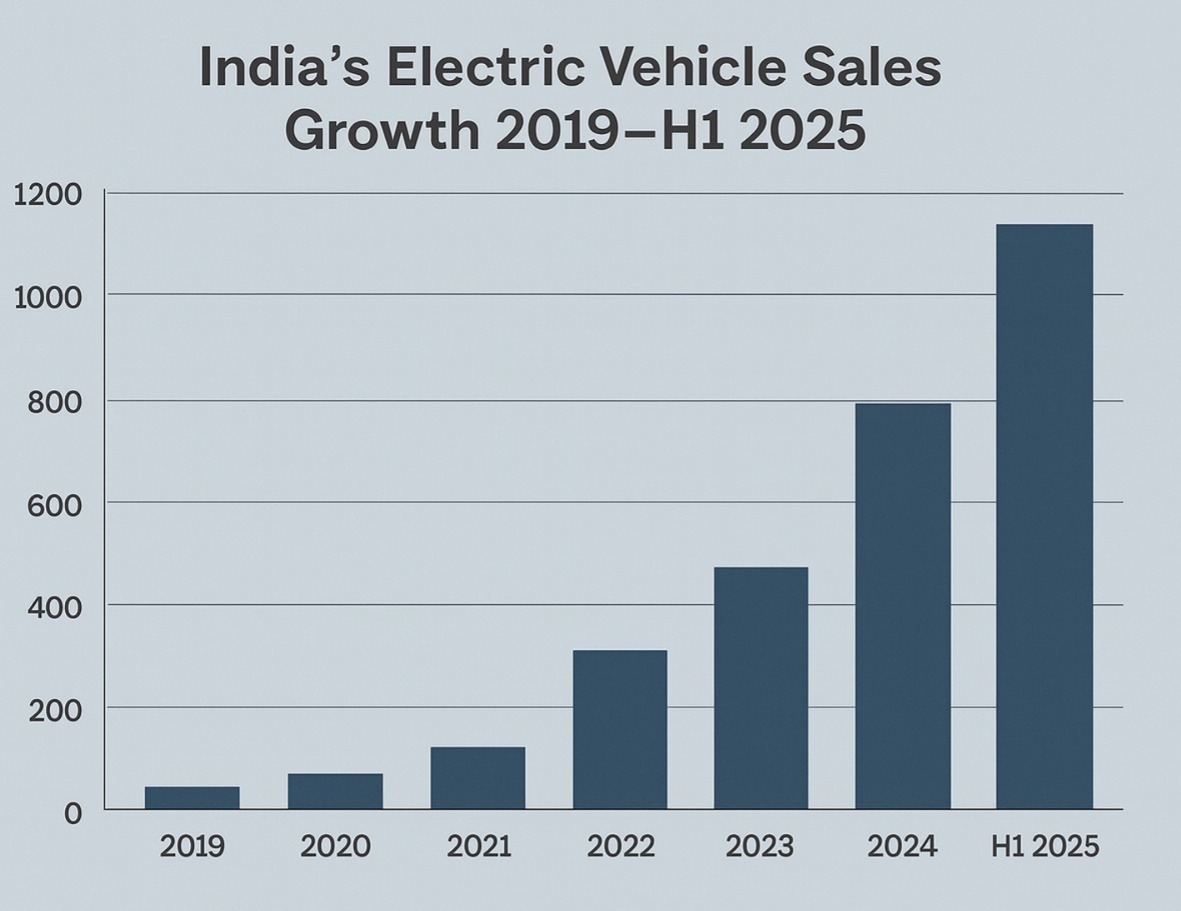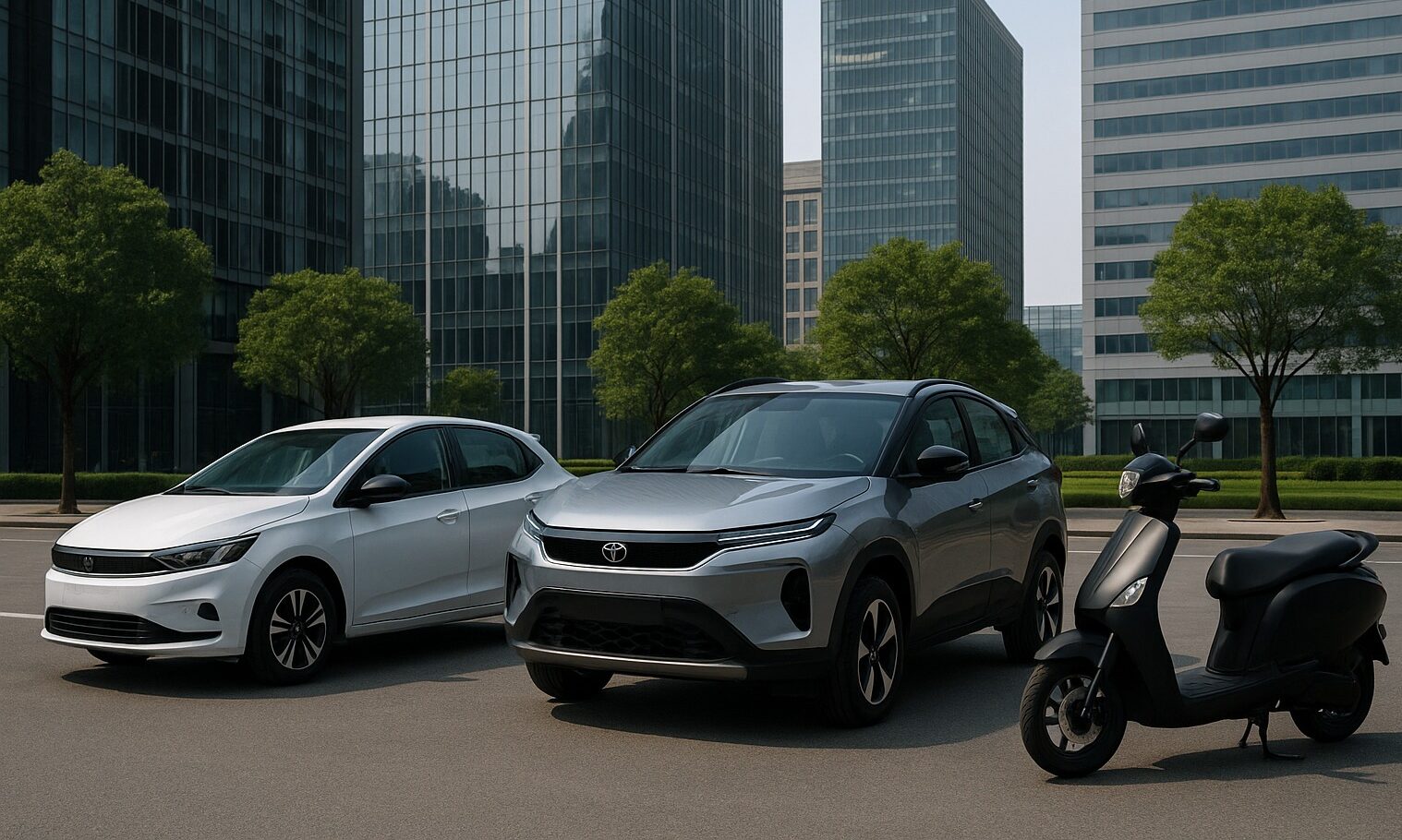The Indian electric vehicles transition has shifted gears. Sales records are falling, big-ticket plants are coming online, and a new policy toolkit is trying to knit demand, supply, and infrastructure into a coherent push. The momentum is real. The question is no longer whether EVs will matter in India, but whether India can shape the global EV story rather than just follow it.
Electric Vehicles Market 17% Up
Through the first half of 2025, Indians bought over 1.05 million EVs, up roughly 17% year on year. The market remains distinctively Indian: two- and three-wheelers contribute about 92% of volumes, reflecting cost sensitivity and daily commuting needs.
Electric two-wheelers crossed 605,000 units in H1; e-rickshaws and cargo three-wheelers added 361,000. Passenger EVs are still a small base but rising fast: ~74,600 cars sold in H1, up 53% from last year, lifting EVs to ~4–5% of new car sales.

Policy has been the accelerator. FAME-II (2019-24) underwrote scale with 1.6 million subsidized EV purchases and thousands of sanctioned chargers. Its successor, PM E-Drive (₹10,900 crore through 2028), prioritizes mass adoption where it moves the needle fastest: two-wheelers, three-wheelers, and e-buses (14,000+).
It also targets a nationwide backbone of ~88,500 charging points, while states add their own purchase sweeteners and tariff benefits to keep running costs low.
On the supply side, the PLI-Auto (₹25,938 crore) and PLI-ACC (₹18,100 crore) schemes have turned intent into investment. Carmakers earn incentives for building advanced EVs locally; cell makers are ramping toward ~40 GWh of sanctioned battery capacity.
A calibrated opening for imports, cutting duties to 15% for EVs above $35,000 if firms commit to India, aims to lure technology and capex while protecting the value-add goal. The signal to global boardrooms is clear: build here, for here and increasingly, for the world.
Infrastructure is the catch-up game. Around 8,885 public chargers are operational under government programs, with an estimated ~25,000 nationwide when private and city networks are included. That’s progress, but thinly spread for a country of India’s size. PM E-Drive earmarks ₹2,000 crore to widen coverage, while Indian Oil, Tata Power, and city utilities are stitching chargers into fuel stations and parking hubs. For two-wheelers, battery swapping continues to be a practical workaround for uptime and curb space.
Competition has sharpened the market. Tata Motors, the first mover, still leads but has seen share slide to ~53% as rivals closed the gap. MG Motor (SAIC–JSW) has climbed to ~28% with aggressive pricing and battery-leasing that trims the upfront hit.
Mahindra & Mahindra is surging off a low base, triple-digit growth as its EV SUV line-up fills out. And Maruti Suzuki has fired its starting gun: the e-Vitara rolled off a Gujarat line this summer with exports to 100+ countries slated before a domestic launch, symbolically important for India’s export pitch.
The spark in two-wheelers comes from startups. Ola Electric parlayed scooters into motorcycles and cell manufacturing. Ather, Ampere, Euler and others brought fast charging, fleet-focused platforms, and flexible financing to the mainstream.
Incumbents Hero, TVS, Bajaj responded with broader portfolios, and a price–value contest is now doing what policy alone could not: normalizing EVs for everyday Indian buyers.
Globally, the yardstick remains formidable. China sold 11+ million electric cars in 2024, about two-thirds of the world’s total and now moves hundreds of thousands a month. Europe sits near 20% penetration for new cars; the U.S. topped 1.6 million EVs in 2024. India’s electric cars were roughly ~100,000 last year and ~2% of the car market.
That gap won’t close overnight. But India has a different play: dominate mass-market formats, scooters, compact cars, and e-buses and export that formula to price-sensitive regions across Asia, Africa, and Latin America.
Leadership, then, hinges on execution. Charging density must jump, especially outside metros. Battery costs need to keep falling as local cell lines scale. Supply chains for motors, electronics, and chemistries have to take root in India to de-risk imports.
And the consumer experience, warranties, residuals, safety, must stay rock solid to preserve trust. If India can hold its current pace while fixing these gaps, it won’t just be a big EV market; it can become the global hub for affordable electric mobility.
Also Read: Anmasa Raises $1.1M to Boost 90-Minute Grocery Delivery in NCR
























